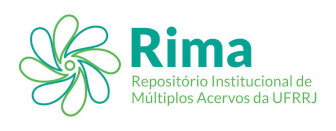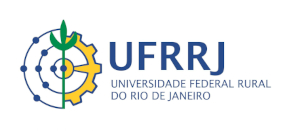Por favor, use este identificador para citar o enlazar este ítem:
https://rima.ufrrj.br/jspui/handle/20.500.14407/21104| Tipo do documento: | Dissertação |
| Título: | Influência das variáveis ambientais na comunidade de espécies arbóreas em uma área reflorestada no município de Cachoeiras de Macacu - RJ |
| Autor: | Wheatley, Alain Rodrigues Thirkell |
| Orientador(a): | Queiroz, Jarbas Marcal de |
| Primeiro membro da banca: | Queiroz, Jarbas Marcal de |
| Segundo membro da banca: | Sansevero, Jerônimo Boelsums Barreto |
| Terceiro membro da banca: | Zaú, André Scarambone |
| Quarto membro da banca: | Moraes, Luiz Fernando Duarte de |
| Palabras clave: | Restauração florestal;Regeneração natural;Mata Atlântica;Natural regeneration;Forest restoration;Atlantic Forest |
| Área(s) do CNPq: | Recursos Florestais e Engenharia Florestal |
| Idioma: | por |
| Fecha de publicación: | 27-feb-2023 |
| Editorial: | Universidade Federal Rural do Rio de Janeiro |
| Sigla da instituição: | UFRRJ |
| Departamento: | Instituto de Florestas |
| Programa: | Programa de Pós-Graduação em Ciências Ambientais e Florestais |
| Citación: | WHEATLEY, Alain Rodrigues Thirkell. Influência das variáveis ambientais na comunidade de espécies arbóreas em uma área reflorestada no municípiode Cachoeiras de Macacu - RJ. 2023. 53 f. Dissertação (Mestrado em Ciências Ambientais e Florestais) - Instituto de Florestas, Universidade Federal Rural do Rio de Janeiro, Seropédica, 2023. |
| Resumen: | A Mata Atlântica em sua extensão original já chegou a ser uma das maiores do planeta e é apontada como um dos cinco mais importantes hotspotsde biodiversidade mundial. Nos últimos séculos, porém, a cobertura florestal do planeta tem sido reduzida e fragmentada drasticamente. Com isso, diversos projetos vêm sendo implementados em todo o mundo com o objetivo de restauraros biomas mais impactados. O plantio em área total é uma das técnicas mais utilizadas para a restauração de áreas de floresta atlântica. Porém, pouco ainda se sabe sobre a importância da comunidade de indivíduos regenerantes em áreas que passaram por restauração ativa. Há uma diversa gama de fatores e processos que influenciam a chegada e o estabelecimento de indivíduos regenerantes em áreas deste tipo. A área de estudo compreende uma área de 100 hectares que passou por plantio de mudas em área total, comtrechos de relevo plano e presença de dois morrotes, localizada dentro da Reserva Ecológica de Guapiaçu, Cachoeiras de Macacu – RJ. A amostragem foifeita pela distribuição aleatória de 50 parcelas de 100m2 cada, totalizando 0,5 hectare amostrado. Nesta pesquisa buscamos entender como a declividade, distância de fragmentos florestais e alguns fatores bióticos como densidade e riqueza de indivíduos plantados influenciaram a densidade, a riqueza e a composição de espécies da comunidade de plantas arbóreas regenerantes. A declividade e a distância da parcela até os trechos de floresta circundante mais próxima influenciaram a composição de espécies regenerantes da área (R2=0,194). A riqueza dos regenerantes, por sua vez, foram influenciadas positivamente pela densidade de indivíduos plantados e pela densidade de indivíduos de Guarea guidonia (L.) Sleumer. também plantados.Já a densidade de indivíduos regenerantes amostrados foi influenciada positivamente pela riqueza de plantados e a distância da floresta circundante, e negativamente pela densidade de plantados e a cobertura de gramíneas da área. As espécies mais abundantes na regeneração natural foram Moquiniastrum polymorphum (Less.) G. Sancho, Cecropia pachystachya Trécul,Miconia albicans (Sw.) Steud., Myrsine coriaceae (Sw.) R.Br. ex Roem. & Schult.e Guarea guidonia (L.) Sleumer. Destas, apenas a Miconia albicans mostrou-sesensível às variáveis físicas estudadas, as outras quatro espécies mostraram-se mais generalistas. Os resultados confirmaram que não apenas as características da comunidade de indivíduos plantados na área, como as características físicas locais e do entorno são capazes de influenciar a colonização das espécies regenerantes. |
| Abstract: | The Atlantic Forest in its original extension has already become one of thelargest on the planet and is considered one of the five most important hotspots ofthe world in terms of biodiversity. In recent centuries, however, the planet's forestcover has been drastically reduced and fragmented. As a result, several projectshave been implemented around the world aiming the restoration of the most impacted biomes, being the total area planting one of the most used techniques for restoring areas of the Atlantic forest. However, little is known about the importance and dynamics ofthe community ofregenerating individuals in activelyrestored areas. There is a diverse range of factors and processes that influence the arrival and establishment of regenerating individuals in areas of this type. Thisstudy focus on an area of 100 hectares, reforested by total area plantingseedlings, with stretches of flat relief and the presence of two hills, located in theEcological Reserve of Guapiaçu, Cachoeiras de Macacu - RJ. Sampling was carried out by randomly distributing 50 plots of 100m2 each, totaling 0.5 hectaressampled in total. In this research, we sought to understand how some variables in the study area influenced the density, richness and species composition of theregenerating community. The slope and distance of the plot to the nearest surrounding forest patches were the only variables that influenced the species composition of the área (R2=0,194). The richness of regenerating individuals, in turn, were positively influenced by the density of planted individuals and by the density of Guarea Guidonia individuals also planted. The density of sampled regenerating individuals was influenced by the greater number of analyzed variables, while the richness of planted trees and the distance from the surrounding forest caused positive variation; the planting density and grass coverin the area had a negative influence on this parameter. The most abundant species in natural regeneration were Moquiniastrum polymorphum (Less.) G. Sancho, Cecropia pachystachya Trécul, Miconia albicans (Sw.) Steud., Myrsine Coriaceae (Sw.) R.Br. ex Roem. & Schult. and Guarea guidonia (L.) Sleumer. Ofthese five species, only Miconia albicans was sensitive to the physical variables studied, the other four species were more generalist. The results confirmed that not only the decisions made during planting, but also the local and surrounding physical characteristics are capable of influencing the colonization of regenerating recruits. |
| URI: | https://rima.ufrrj.br/jspui/handle/20.500.14407/21104 |
| Aparece en las colecciones: | Mestrado em Ciências Ambientais e Florestais |
Se for cadastrado no RIMA, poderá receber informações por email.
Se ainda não tem uma conta, cadastre-se aqui!
Ficheros en este ítem:
| Fichero | Descripción | Tamaño | Formato | |
|---|---|---|---|---|
| 2023 - Alain Rodrigues Thirkell Wheatley.pdf | 1.39 MB | Adobe PDF |  Visualizar/Abrir |
Los ítems de DSpace están protegidos por copyright, con todos los derechos reservados, a menos que se indique lo contrario.

